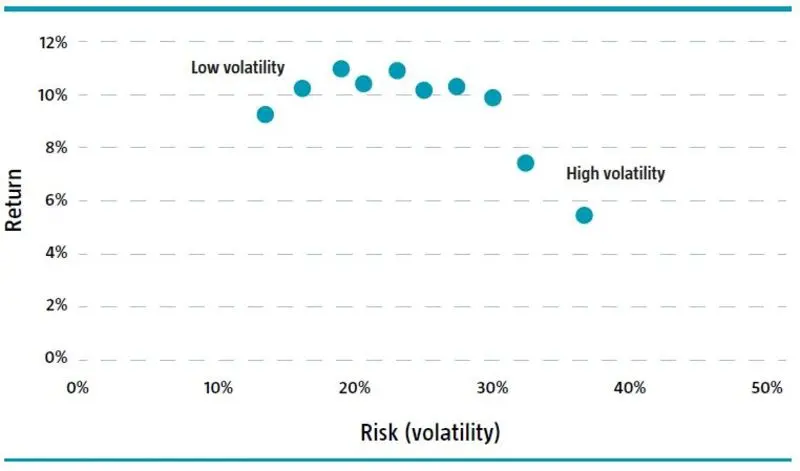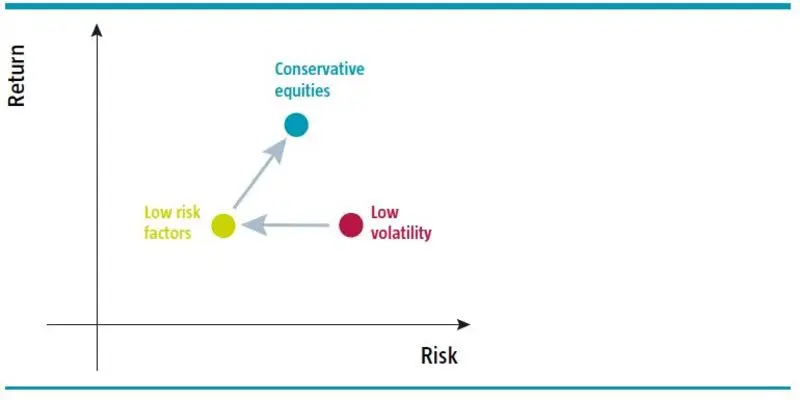Disclaimer
This page is intended for US prospects, clients and investors only and includes information about the capabilities, staffing and history of RIAM US and its participating affiliates, which may include information on strategies not yet available in the US. SEC regulations are applicable only to clients, prospects and investors of RIAM US. Robeco BV, Robeco HK and Robeco SH are considered a “participating affiliate” of RIAM US and some of their employees are “associated persons” of RIAM US as per relevant SEC no-action guidance. Employees identified as associated persons of RIAM US perform activities directly or indirectly related to the investment advisory services provided by RIAM US. In those situations, these individuals are deemed to be acting on behalf of IUAM, a US SEC registered investment adviser.
By clicking I Agree, I confirm that I have read and understood the above.
Quantitative investing
Low volatility factor
Low volatility stocks realize comparatively high risk-adjusted returns. The same is true for corporate bonds.
The notion that greater risk pays off in the long run by generating higher returns has been proven incorrect by academic research*. Further studies show that the performance of low-risk stocks does not lag that of the market as a whole. The chart below demonstrates this on the basis of data from a study.
Figure: Risk-return ratio 1931 - 2009

Source: Pim van Vliet: 'Low-volatility investing - a long-term perspective', January 2012.
Robeco's approach to investing in low-volatility equities is reflected in its 'Conservative Strategy'. Compared to an ordinary low-volatility strategy, this approach strives to achieve lower transaction costs, reduced risk and extra returns in a market upturn.
Robeco not only selects stocks on the basis of low volatility, but also looks at insolvency risk and Value- and Momentum-driven factors. For example, by taking the Value factor into account in the selection of low-volatility stocks, investors are prevented from paying too high a price.
This is how this strategy differs from that used by low-vol investors who select stocks exclusively on the basis of historically low volatility.
Invisible layers surface to deliver attractive returns
Figure: Improved risk-return ratio in Robeco's Low Volatility factor approach - Robeco Conservative Equities

Source: Pim van Vliet: 'Low-volatility investing - a long-term perspective', January 2012.
Robeco uses the low-volatility anomaly not only for stocks, but also for bonds, and calls this approach 'Robeco Conservative Credits'. According to this methodology, investments are made consistently in the bonds of companies with a low level of expected risk.
These bonds are characterized by a shorter time to maturity and a higher level of 'seniority' (the order of repayments in the event of default). The bonds are issued by companies with relatively low debt-to-equity ratios.















